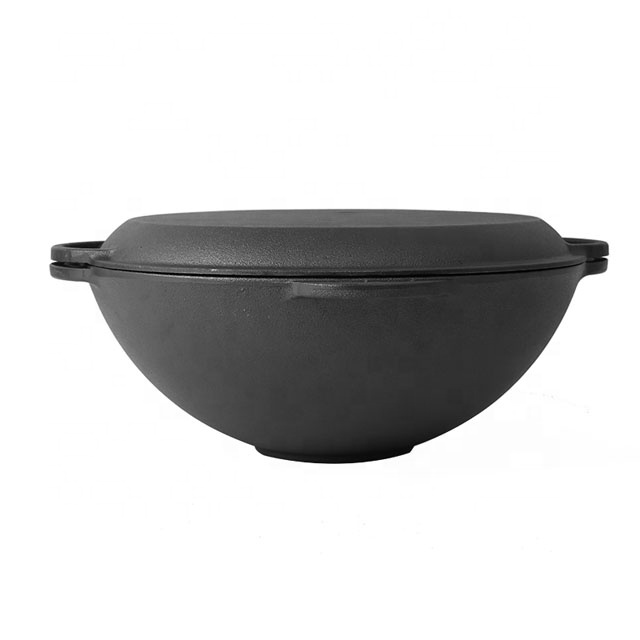
Understanding the Causes of Enamel Chipping on Dutch Ovens and How to Prevent It
The Dilemma of Dutch Oven Enamel Coming Off Causes, Solutions, and Prevention
Dutch ovens are a beloved kitchen staple, celebrated for their versatility and durability. From slow-cooking stews to baking bread, they have earned their place in many homes around the world. However, one common concern among users is the enamel coating coming off. This issue can be alarming and may lead to questions about safety and usability. In this article, we will explore the causes of enamel chipping or peeling, possible solutions, and preventive measures to prolong the life of your cherished kitchen tool.
Understanding Enamel Coating
Enamel is a glass-like coating applied to cast iron, intended to create a non-stick surface, enhance aesthetic appeal, and protect the underlying metal from rust and wear. While it significantly enhances the functionality of cast iron, it is not invincible. Over time, and with improper care, the enamel may degrade, leading to chipping or peeling.
Common Causes of Enamel Damage
1. High Heat Exposure One of the primary reasons for enamel deterioration is exposure to excessive heat. Dutch ovens are designed to withstand high temperatures; however, putting them on a direct flame or in an overheated oven can lead to thermal shock, causing the enamel to crack or chip.
2. Use of Metal Utensils While the enamel coating is robust, it can still be scratched by metal utensils. Using forks, knives, or metal spatulas can mar the surface, leading to eventual peeling of the enamel.
3. Improper Cleaning Methods Harsh cleaning supplies, steel wool, and abrasive scrubbers can strip away the enamel without your realizing it. Additionally, washing a hot cast-iron Dutch oven with cold water can expose it to thermal shock, resulting in cracks.
4. Temperature Shock Rapid changes in temperature can weaken the enamel. For instance, placing a hot Dutch oven into cold water can cause the enamel to crack and chip, as the sudden temperature drop stresses the material.
5. Poor Quality Enamel Not all Dutch ovens are created equal. Some lower-quality brands may have a thinner enamel layer that is more susceptible to chipping and degradation over time.
Solutions When Enamel Comes Off
dutch oven enamel coming off

If you notice that your Dutch oven’s enamel is coming off, the first step is to assess the extent of the damage. Small chips may not render the oven unusable, but if the underlying cast iron is exposed, it is crucial to address the issue.
1. Return or Exchange If your Dutch oven is relatively new and the enamel is peeling off, consider returning or exchanging it, especially if it is under warranty. Manufacturers often provide guarantees against such defects.
2. Avoiding Further Damage Until you find a solution, avoid using the damaged pot for cooking acidic foods, as this can exacerbate the issue and lead to rust.
3. Re-enameling For significant damage, consider enlisting a professional service that specializes in re-enameling cast iron cookware. This can restore the surface and improve the functionality of the pot.
4. Replacing the Dutch Oven If the damage is severe and the cost to repair is too high, it might be more economical to invest in a new Dutch oven. Look for high-quality brands known for their durability and superior enamel coatings.
Preventive Measures
1. Gradual Heating Always heat your Dutch oven gradually. Avoid high heat settings, and never place an empty Dutch oven over a flame.
2. Gentle Utensils Use wooden or silicone utensils to prevent scratching the enamel. These materials are gentle on the surface and help maintain its integrity.
3. Proper Cleaning Clean your Dutch oven with a soft sponge or cloth. Avoid using harsh chemicals or abrasive materials. Instead, opt for gentle soap and warm water to preserve the enamel.
4. Avoid Temperature Shock Let your Dutch oven cool down before cleaning, and avoid sudden temperature transitions to prevent thermal shock.
By understanding the causes of enamel damage and implementing preventive measures, you can enjoy using your Dutch oven for many years to come. With proper care, this kitchen workhorse will continue to provide delicious meals and cherished memories for your family.
-
Season Cast Iron Perfectly with GPT-4 Turbo TipsNewsAug.01,2025
-
High Quality Cast Iron Cookware - Baixiang County Zhongda MachineryNewsAug.01,2025
-
Premium Cast Iron Pan: Durable & Perfect HeatNewsAug.01,2025
-
High Quality Kitchen Durable Black Round Cast Iron Cookware Pancake Crepe Pan-Baixiang County Zhongda Machinery Manufacturing Co., Ltd.NewsAug.01,2025
-
Cast Iron Cookware - Baixiang County Zhongda Machinery | Nonstick, Heat ResistanceNewsAug.01,2025
-
High Quality Kitchen Durable Black Round Cast Iron Cookware - Baixiang County Zhongda Machinery | Non-Stick, Heat Retention, DurableNewsJul.31,2025


